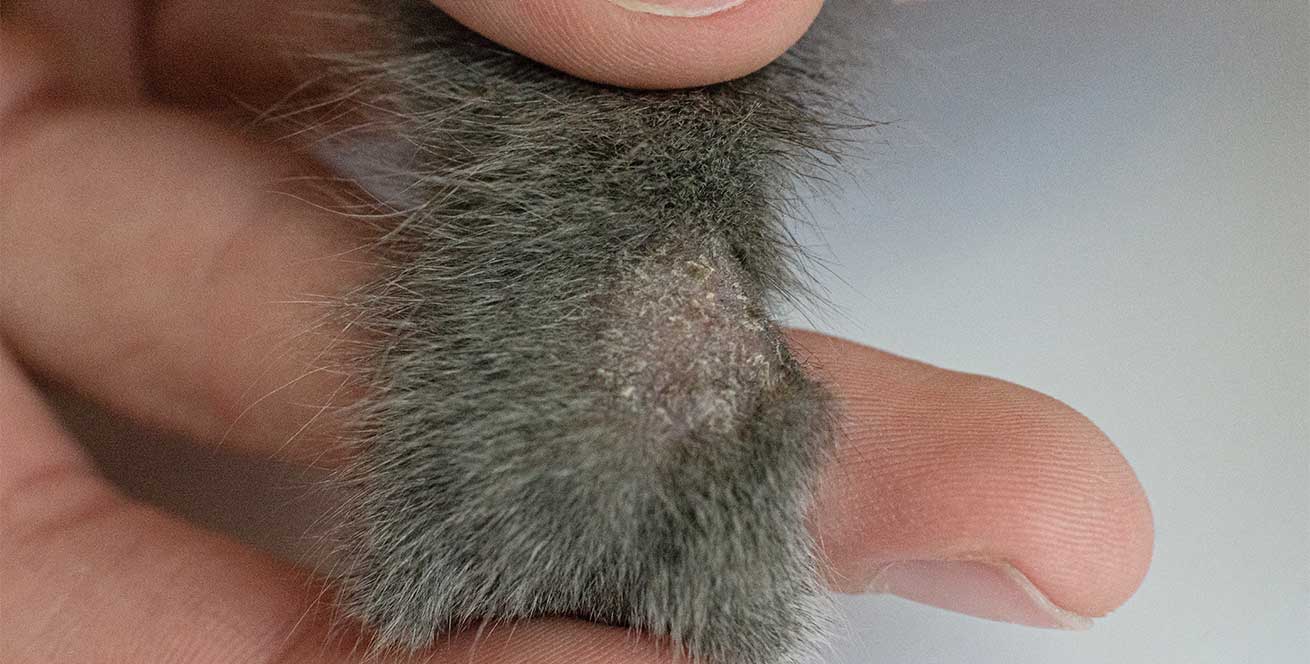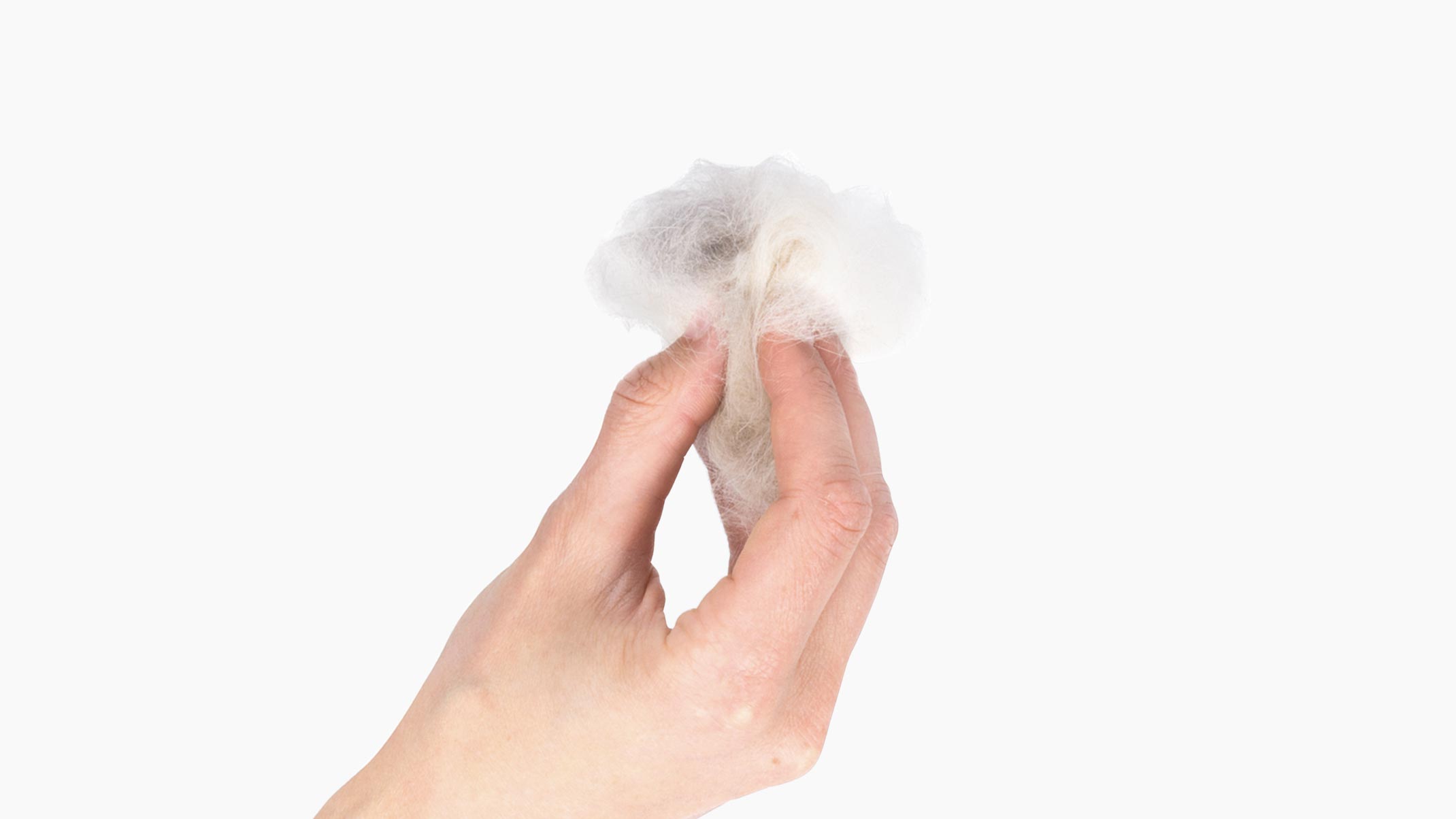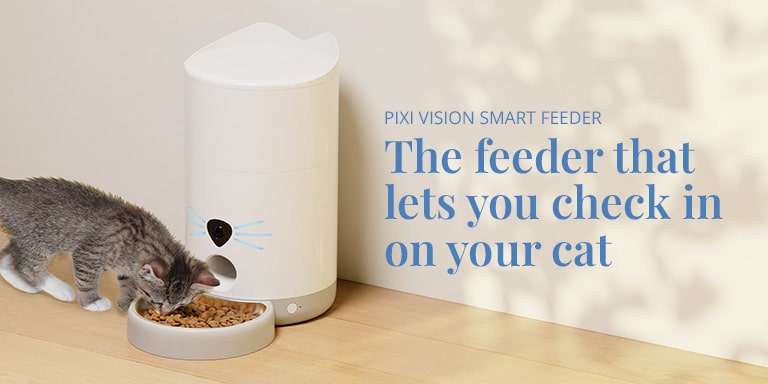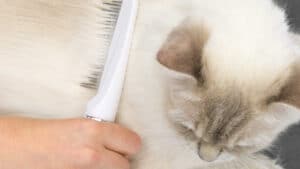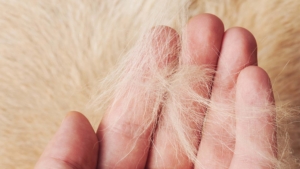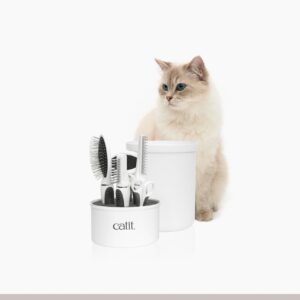In this article
Normal shedding and hair loss
Most hair loss in cats is perfectly normal. Outdoor cats go through shedding season twice a year, while indoor cats tend to shed all year long, although to a lesser extent. Some cats, like the Peterbald and the Sphynx, barely have any hair at all. Now, did you notice that many cats are less furry on the strip between their ears and their eyes than on the rest of their body? This is called preauricular alopecia and it’s a perfectly normal part of the ageing process.
Abnormal hair loss and balding
If your cat is losing hair to the point where balding spots or patches appear, there’s a good chance something is amiss. Below, you can find the most common causes of hair loss in cats. Regardless of what you suspect to be the cause of your cat’s balding, always contact your vet so they can identify or rule out underlying conditions.
The 3 most common causes of hair loss in cats
#1: Skin allergies
Just like humans, cats can be allergic to various substances. A very common cause of allergic reactions in cats is flea bites. The flea saliva irritates the cat’s skin, after which the poor animal will use their tongue and claws to scratch the itch. Now, cats have little hooks on their tongue, called papillae. This spikey tongue sure comes in handy when you have a ton of fur to groom, but as the papillae pull on the hair, overgrooming will inevitably lead to local hair loss.

#2: Arthritis
Arthritis is a condition in which the joints become painful, making it more difficult for your cat to walk and jump. Hair loss will most likely not be the first or the only symptom you notice, but bald spots can definitely occur as your cat will lick the painful joint(s) to relieve discomfort. Since a cat’s tongue is covered in tiny hooks, overgrooming will lead to bald spots. Arthritis can be managed, but not cured. As a result, the bald patches may never go away completely.

#3: Ringworm
Ringworm has nothing whatsoever to do with a worm that lives inside your cat’s body. In fact, it is a fungal infection that got its name from the ring-shaped bald patches it causes. Ringworm is best diagnosed early on, as it can be transferred to humans. Once a treatment is started, it will take at least 6 weeks for the ringworm infection to be fully cured, so your cat will unfortunately look a little scruffy for a few more months.
